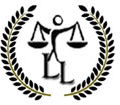The Trade and Merchandise Marks Act, 1958 is an earlier legislation that governed the trademarks law in India. The main intention behind the legislation was to provide registration and legal protection of trademarks and regulate the use of fraudulent marks on products. The Act provides the definition of the trademark in two different contexts. Accordingly, trademark is a registered or unregistered mark used in the products to indicate the relation between the goods and the person holding the right to make use of the trademark, during trade. In another perspective, trademark means the mark used in the products to indicate the link between goods and the person holding proprietary right or registered user for the purpose of utilizing the mark. The trademark under the Act consists of certification trade mark and the marks shall either or not specify the identity of the person.
The Act confers jurisdiction on the High Court situated in the local limits of the Trade Mark registry constituted under the Act. The Central Government is authorized under the Act to appoint the Controller General of Patents, Designs and Trade Marks to act as the Registrar of Trade Marks to discharge the duties specified under the Act. The Act provides for the constitution of Trademarks Registry, the functions of which are determined by the Central Government. In the head office of the registry, a register shall be maintained in which information like name, address, description of the owner and such other details provided by the Act shall be entered. The conditions and restrictions on the registered trademark shall also be mentioned in the register. The register shall be administered and managed by the registrar under the supervision of the Central Government.
The registration for the trademark shall be obtained where such trademark is with regard to any goods or certain class of goods. The Act prohibits the registration of certain marks which would mislead or make confusion to the public, the mark against the principles of any existing law, mark consisting outrageous or obscene theme, mark against the religious community etc. The Act further provides that the trademark shall not be registered where the goods are similar or deceptively identical with previously registered mark for the same kind of goods in the name of different owners. The person who claims to be the owner of a mark shall file an application before the registrar for registration in the manner prescribed under the Act. The registrar shall either accept or reject the application, but where the application is rejected the registrar shall record the reason for such rejection in writing.
The Act vests the right over the trademark to the registered owner for a term of seven years but the owner shall have the opportunity to renew the term after the expiry of seven years. An action for infringement shall not be instituted for an unregistered trademark. The registration grants restricted rights upon the true owner to use the trademark with regard to certain goods or class of goods. The right of the owner to use the goods shall be subject to restriction imposed under the Act. The Act provides special provisions for certification trade mark and registration by way of filing an application to the registrar. The registrar shall have the powers of a civil court in discharging its functions and orders issued by the registrar shall have the status of decree enunciated by the civil court.
The Act repealed the Indian Merchandise Marks Act, 1889 and the Trade Marks Act, 1940. But the Act failed to include many provisions in conformity with international standards and did not mention about trademark for services. To overcome the drawbacks of the Trade and Merchandise Act, 1958 Parliament enacted Trademarks Act, 1999 and repealed the 1958 Act. The Trademarks Act of 1999 contains elaborate provisions dealing with registration of trademarks, rights of registered proprietors, penalty for infringement etc in consonance with international conventions and national needs. The 1999 Act was again amended by enacting Trademarks (Amendment) Act, 2010.






